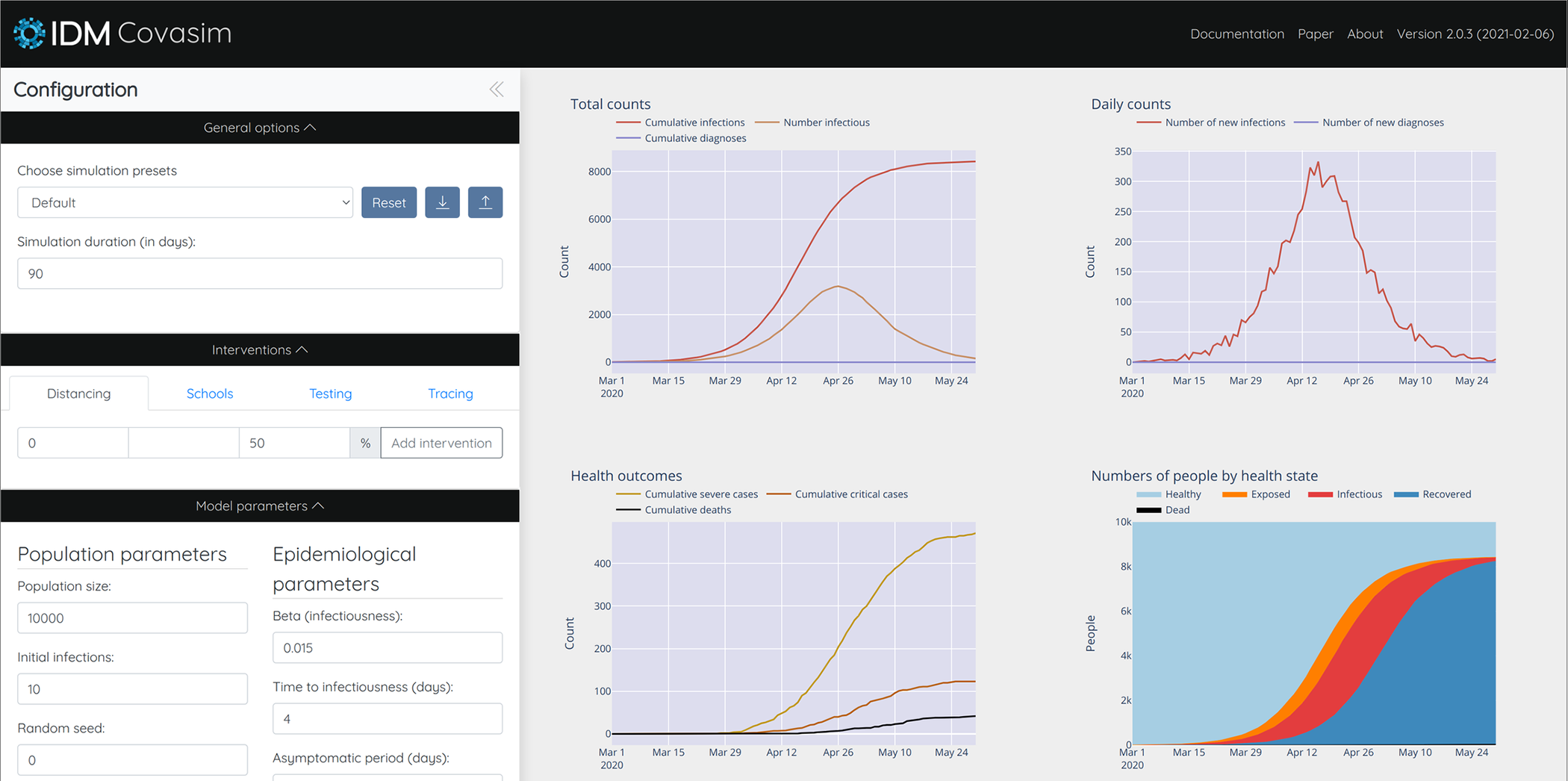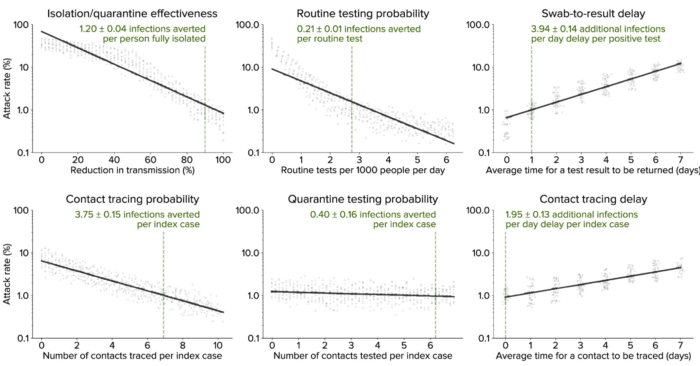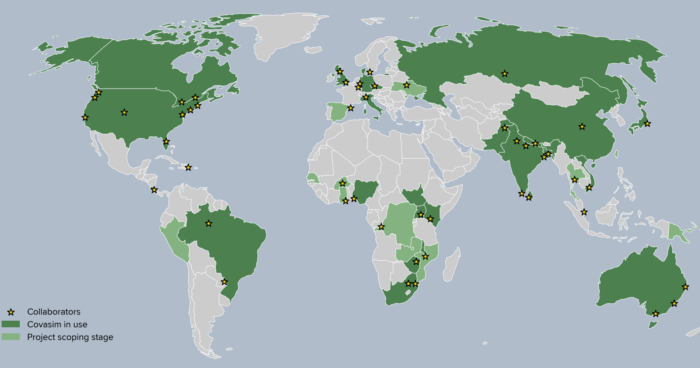Covasim is a stochastic agent-based simulator designed to be used for COVID-19 (novel coronavirus, SARS-CoV-2) epidemic analyses. These include projections of indicators such as numbers of infections and peak hospital demand. Covasim can also be used to explore the potential impact of different interventions, including social distancing, school closures, testing, contact tracing, quarantine, and vaccination.


Features
Features of Covasim include:
- Stochastic agent-based simulator: Covasim is designed as a stochastic agent-based model, providing a detailed simulation of individual-level interactions to predict the spread of COVID-19.
- Epidemic analyses and projections: The model generates projections for critical epidemic indicators such as infection numbers and peak hospital demand, helping users plan for healthcare capacity and resource needs.
- Exploration of intervention impacts: Covasim allows users to simulate and assess the potential impacts of various interventions, such as social distancing, school closures, testing, contact tracing, quarantine, and vaccination.
Our approach
Our approach with Covasim emphasizes a balance between performance, ease of use, and flexibility. Implemented in Python, Covasim enables researchers and policymakers to simulate realistic and highly customized scenarios rapidly, running complex models on a standard laptop in under a minute. By collaborating closely with local health agencies and policymakers, we ensure that Covasim’s analyses are grounded in real-world needs, helping to shape effective responses to the COVID-19 pandemic across diverse settings.

